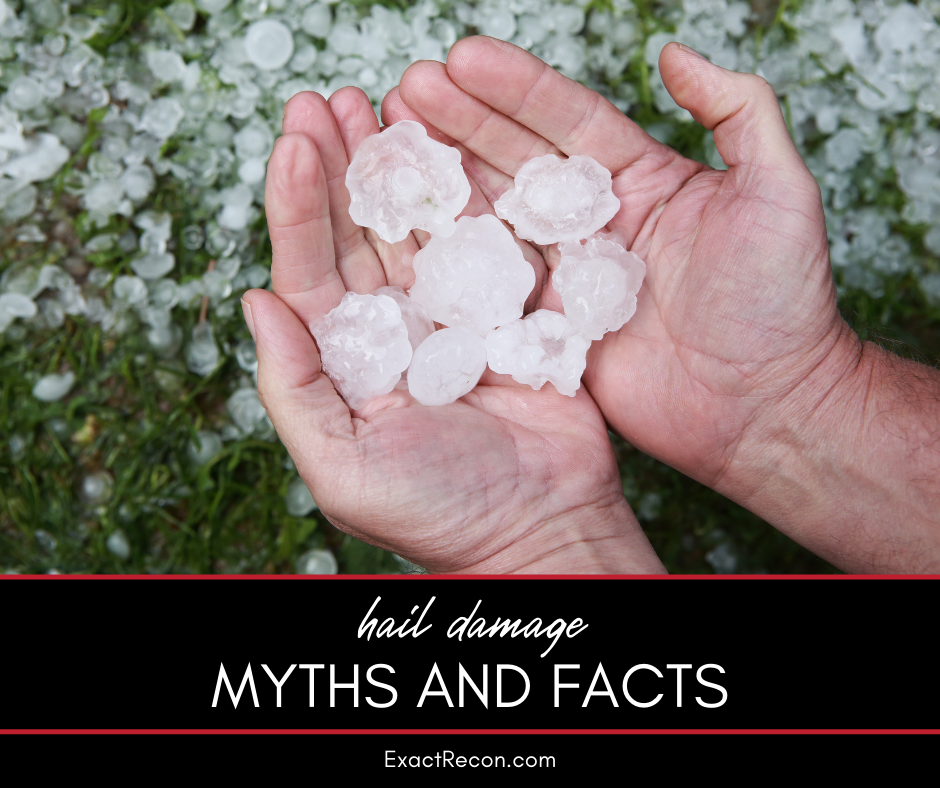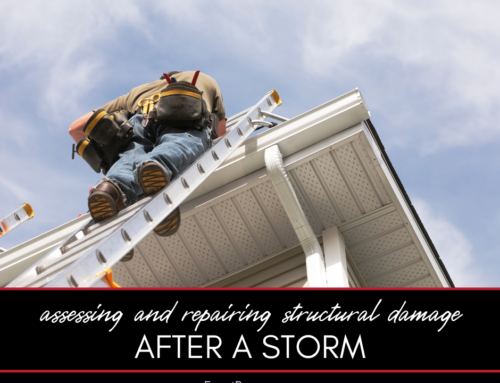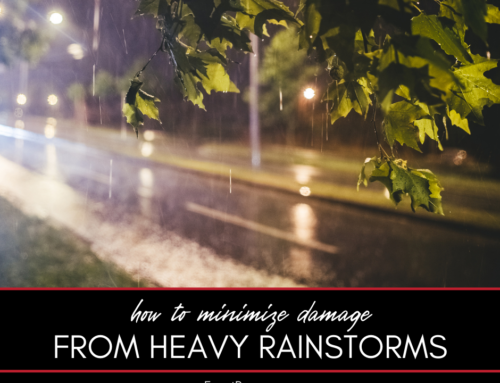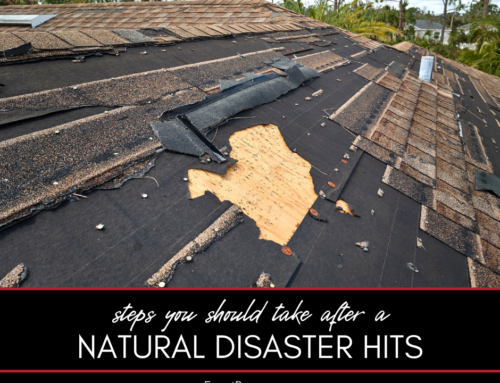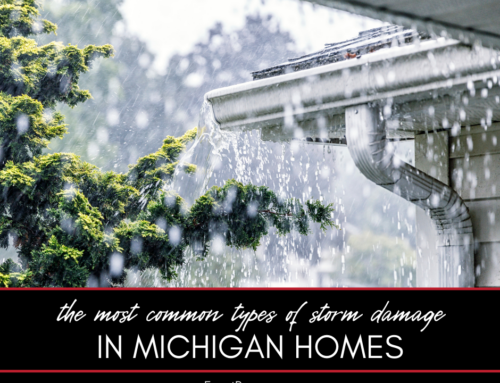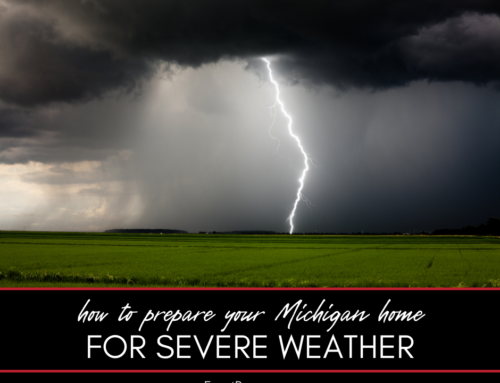Hailstorms can cause significant damage to homes and properties, but there are many misconceptions about hail damage. Understanding the facts can help you take appropriate measures to protect your home and ensure proper restoration.
Hail Damage Myths and Facts
This guide dispels common myths and presents facts about hail damage. It covers the following:
- Myth: Hail damage is always visible
- Fact: Hail damage can be hidden and severe
- Myth: Small hailstones can’t cause significant damage
- Fact: Even small hailstones can damage your home
- Myth: Hail damage is purely cosmetic
- Fact: Hail damage can lead to serious issues
- Myth: Insurance won’t cover hail damage
- Fact: Many insurance policies cover hail damage
- Myth: You can easily fix hail damage yourself
- Fact: Professional repair is often necessary
Here’s a closer look at each.
Myth: Hail Damage Is Always Visible
A common misconception is that hail damage is always immediately visible. Many people believe that unless they see large dents or broken windows, their home is undamaged. However, hail damage can be subtle and not immediately apparent. Small dents, cracks, and bruises on roofing materials and siding may not be noticeable at first glance but can lead to significant problems over time. For this reason, it’s important to have a professional inspection after a hailstorm, even if there are no obvious signs of damage.
Related: Expert advice on water damage, fire damage, mold and more
Fact: Hail Damage Can Be Hidden and Severe
Hail damage can be hidden and still cause severe problems. Hailstones can create small, unnoticeable cracks in shingles, allowing water to seep into your roof. Over time, this can lead to water damage, mold growth, and structural issues. Similarly, hail can damage the protective granules on asphalt shingles, reducing their lifespan and effectiveness. Hidden hail damage can compromise the integrity of your roof and home, leading to costly repairs if not addressed promptly. Professional inspections can identify and address hidden damage before it becomes a major issue.
Myth: Small Hailstones Can’t Cause Significant Damage
Another myth is that only large hailstones cause significant damage. While larger hailstones can indeed cause more noticeable and severe damage, smaller hailstones can also be harmful. Small hailstones can create pockmarks on roofing materials, dent siding, and damage gutters and downspouts. Even if the damage seems minor, it can reduce the effectiveness of your roofing and siding, leading to leaks and other issues over time. It is essential to take all hailstorms seriously, regardless of the size of the hailstones.
Fact: Even Small Hailstones Can Damage Your Home
Even small hailstones can cause damage to your home that may not be immediately visible but can lead to long-term problems. Small hail can strip the protective granules from asphalt shingles, making them more susceptible to weathering and leaks. It can also create tiny cracks and dents in siding and windows, allowing moisture to enter your home. These seemingly minor damages can accumulate and result in significant repair costs if not addressed. A professional assessment can determine the extent of damage caused by small hailstones and recommend appropriate repairs.
Myth: Hail Damage Is Purely Cosmetic
Many homeowners believe that hail damage is only cosmetic and doesn’t affect the functionality of their home. They may think that dents and dings on the roof or siding are just superficial and do not require immediate attention. However, this is a dangerous misconception. Hail damage can compromise the structural integrity of your roof, siding, and windows, leading to leaks, water damage, and even mold growth. Ignoring hail damage can result in more extensive and costly repairs in the future. It is crucial to address hail damage promptly to maintain the safety and integrity of your home.
Related: Sewage backup in your home
Fact: Hail Damage Can Lead to Serious Issues
Hail damage can lead to serious issues if not addressed promptly. Damaged shingles and siding can allow water to penetrate your home, leading to water damage, rot, and mold growth. Cracked or broken windows can reduce energy efficiency and security. Additionally, the cumulative effect of repeated hailstorms can weaken roofing materials and siding, making them more susceptible to future damage. Addressing hail damage as soon as possible is essential to prevent these long-term problems and protect your home from further harm.
Myth: Insurance Won’t Cover Hail Damage
Some homeowners believe that their insurance won’t cover hail damage, leading them to avoid filing a claim. This myth can result in homeowners paying out-of-pocket for repairs that could have been covered by their insurance. While insurance policies vary, many homeowners’ insurance policies do cover hail damage as part of their wind and hail coverage. It is important to review your policy and understand your coverage. If you experience hail damage, contact your insurance company to file a claim and have a professional assessment of the damage.
Fact: Many Insurance Policies Cover Hail Damage
Many homeowners’ insurance policies cover hail damage, including damage to the roof, siding, windows, and other parts of the home. Coverage typically includes the cost of repairs or replacement of damaged materials, minus the deductible. It is important to document the damage and file a claim as soon as possible after the hailstorm. A professional inspection and detailed documentation can support your claim and ensure that you receive the coverage you are entitled to. Contact your insurance company to understand your coverage and the claims process.
Myth: You Can Easily Fix Hail Damage Yourself
Some homeowners believe they can easily fix hail damage themselves, using DIY methods to repair dents and cracks. While minor cosmetic damage may be manageable, most hail damage requires professional repair to ensure it is properly addressed. DIY repairs can often be inadequate, leaving underlying issues unresolved and potentially causing more harm than good. Additionally, improper repairs can void warranties and insurance coverage. It is best to leave hail damage repair to professionals who have the expertise, tools, and materials to restore your home safely and effectively.
Fact: Professional Repair Is Often Necessary
Professional repair is often necessary to properly address hail damage. Professionals have the training and experience to assess the extent of the damage, including hidden issues that may not be immediately visible. They use specialized tools and techniques to repair or replace damaged roofing, siding, windows, and other materials. Professional repairs ensure that your home is restored to its pre-damage condition, maintaining its structural integrity and protecting against future damage. If your home has suffered hail damage, it is essential to call a professional for a thorough assessment and repair.
FAQ About Hail Damage Myths and Facts
Check out these commonly asked questions about hail damage myths and facts. If you don’t see your question here, please call our office and we’ll find you the answers you need.
How Can I Tell If My Home Has Hidden Hail Damage?
Hidden hail damage may not be immediately visible but can include small dents, cracks, and bruises on roofing and siding. A professional inspection can identify hidden damage and recommend appropriate repairs.
What Size Hailstones Can Cause Damage?
Even small hailstones can cause damage to your home. Hailstones as small as 1 inch in diameter can create dents, cracks, and other issues that can lead to long-term problems if not addressed.
Related: How does homeowners insurance work after a disaster?
Will My Insurance Cover the Cost of Hail Damage Repairs?
Many homeowners’ insurance policies cover hail damage. It is important to review your policy and understand your coverage. Contact your insurance company to file a claim and have a professional assessment of the damage.
Can I Repair Hail Damage Myself?
While minor cosmetic damage may be manageable with DIY methods, most hail damage requires professional repair to ensure it is properly addressed. Professional repairs maintain the structural integrity of your home and prevent future issues.
Why Is Professional Repair Important for Hail Damage?
Professional repair is important for hail damage because professionals have the expertise, tools, and materials to properly assess and repair damage. They ensure that your home is restored to its pre-damage condition and protect against future issues.
Do You Need a Disaster Remediation Expert in Washtenaw County or Jackson County?
If your home has already been damaged, we can help. Check out our services and call Exact Recon for your free disaster remediation quote today. We offer:
- Water damage restoration
- Fire damage restoration
- Mold removal and remediation
- Fire and smoke restoration
- Sewer cleanup and disinfecting
- Reconstruction
- Wind and storm damage repair

